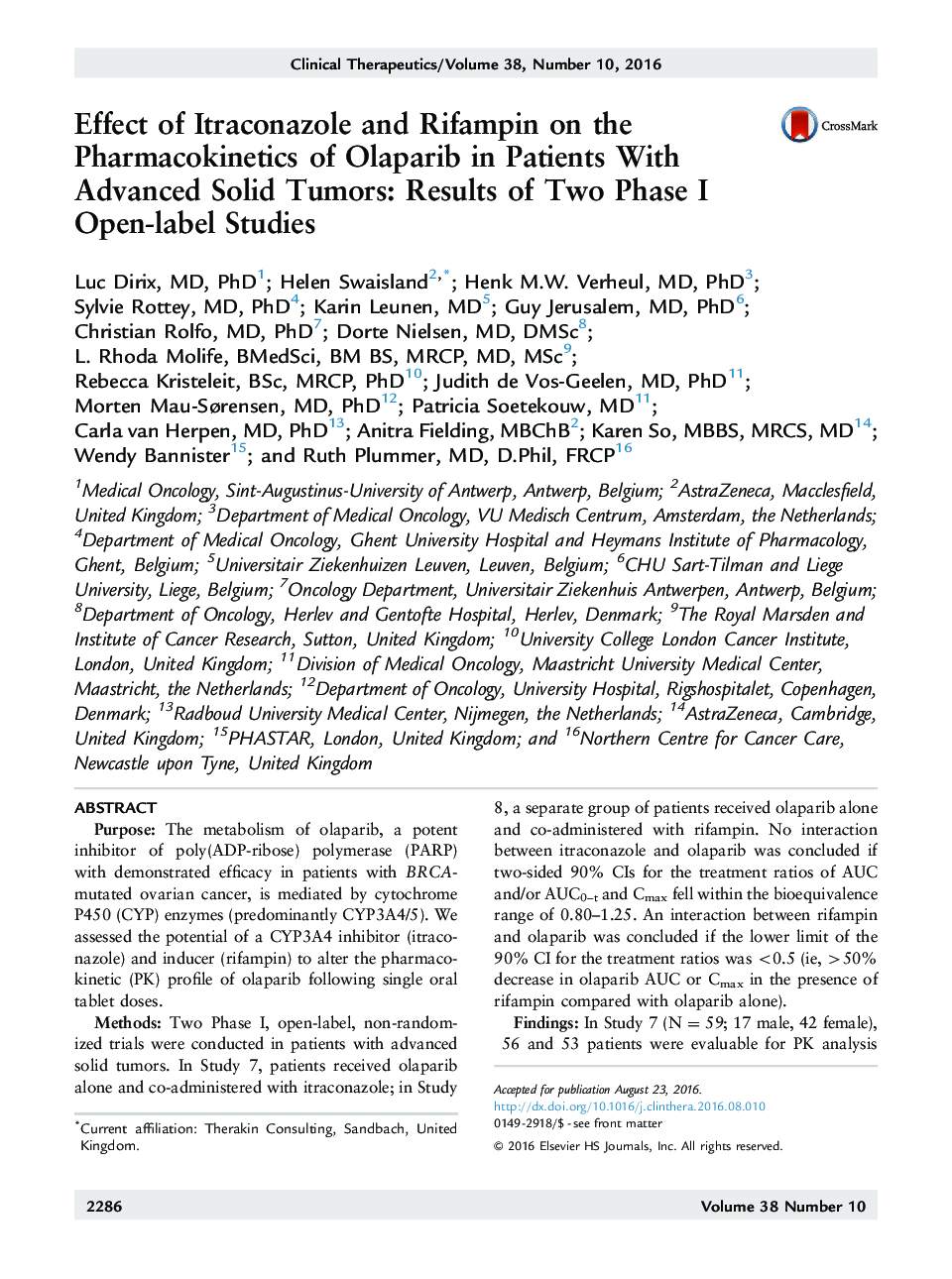| Article ID | Journal | Published Year | Pages | File Type |
|---|---|---|---|---|
| 5554204 | Clinical Therapeutics | 2016 | 14 Pages |
PurposeThe metabolism of olaparib, a potent inhibitor of poly(ADP-ribose) polymerase (PARP) with demonstrated efficacy in patients with BRCA-mutated ovarian cancer, is mediated by cytochrome P450 (CYP) enzymes (predominantly CYP3A4/5). We assessed the potential of a CYP3A4 inhibitor (itraconazole) and inducer (rifampin) to alter the pharmacokinetic (PK) profile of olaparib following single oral tablet doses.MethodsTwo Phase I, open-label, non-randomized trials were conducted in patients with advanced solid tumors. In Study 7, patients received olaparib alone and co-administered with itraconazole; in Study 8, a separate group of patients received olaparib alone and co-administered with rifampin. No interaction between itraconazole and olaparib was concluded if two-sided 90% CIs for the treatment ratios of AUC and/or AUC0-t and Cmax fell within the bioequivalence range of 0.80-1.25. An interaction between rifampin and olaparib was concluded if the lower limit of the 90% CI for the treatment ratios was <0.5 (ie, >50% decrease in olaparib AUC or Cmax in the presence of rifampin compared with olaparib alone).FindingsIn Study 7 (N = 59; 17 male, 42 female), 56 and 53 patients were evaluable for PK analysis following treatment with olaparib alone and olaparib plus itraconazole, respectively; in Study 8 (N = 22; 4 male, 18 female), all patients were evaluable. Co-administration of olaparib with itraconazole resulted in a statistically significant increase in the relative bioavailability of olaparib: Cmax treatment ratio, 1.42 (90% CI, 1.33-1.52); mean AUC treatment ratio, 2.70 (90% CI, 2.44-2.97). Mean CL/F and Vz/F were reduced (8.16 vs 3.05 L/h and 192 vs 75.1 L), although mean t½ was unchanged (15.0 vs 15.6 hours). Co-administration of olaparib with rifampin resulted in a statistically significant decrease in the relative bioavailability of olaparib: Cmax treatment ratio, 0.29 (90% CI, 0.24-0.33); mean AUC treatment ratio, 0.13 (90% CI, 0.11-0.16). CL/F and Vz/F were increased when olaparib and rifampin were co-administered (6.36 vs 48.3 L/h and 112 vs 1076 L); however, mean t½ was unchanged (13.0 vs 15.8 hours). Safety data for olaparib following tablet dosing were consistent with the known safety profile.ImplicationsExposure to olaparib was significantly increased when co-administered with the potent CYP3A4 inhibitor itraconazole, and significantly decreased when co-administered with the potent CYP3A4 inducer rifampin, compared with olaparib alone. Potent CYP3A4 enzyme inhibitors and inducers should be avoided during olaparib treatment.ClinicalTrials.gov identifiers: NCT01900028 (Study 7) and NCT01929603 (Study 8).
